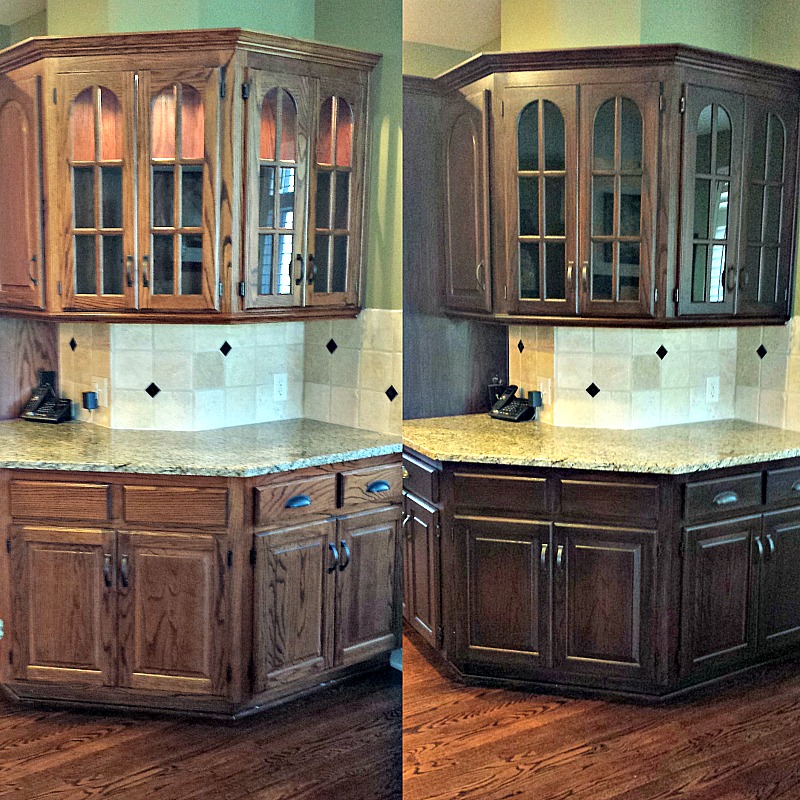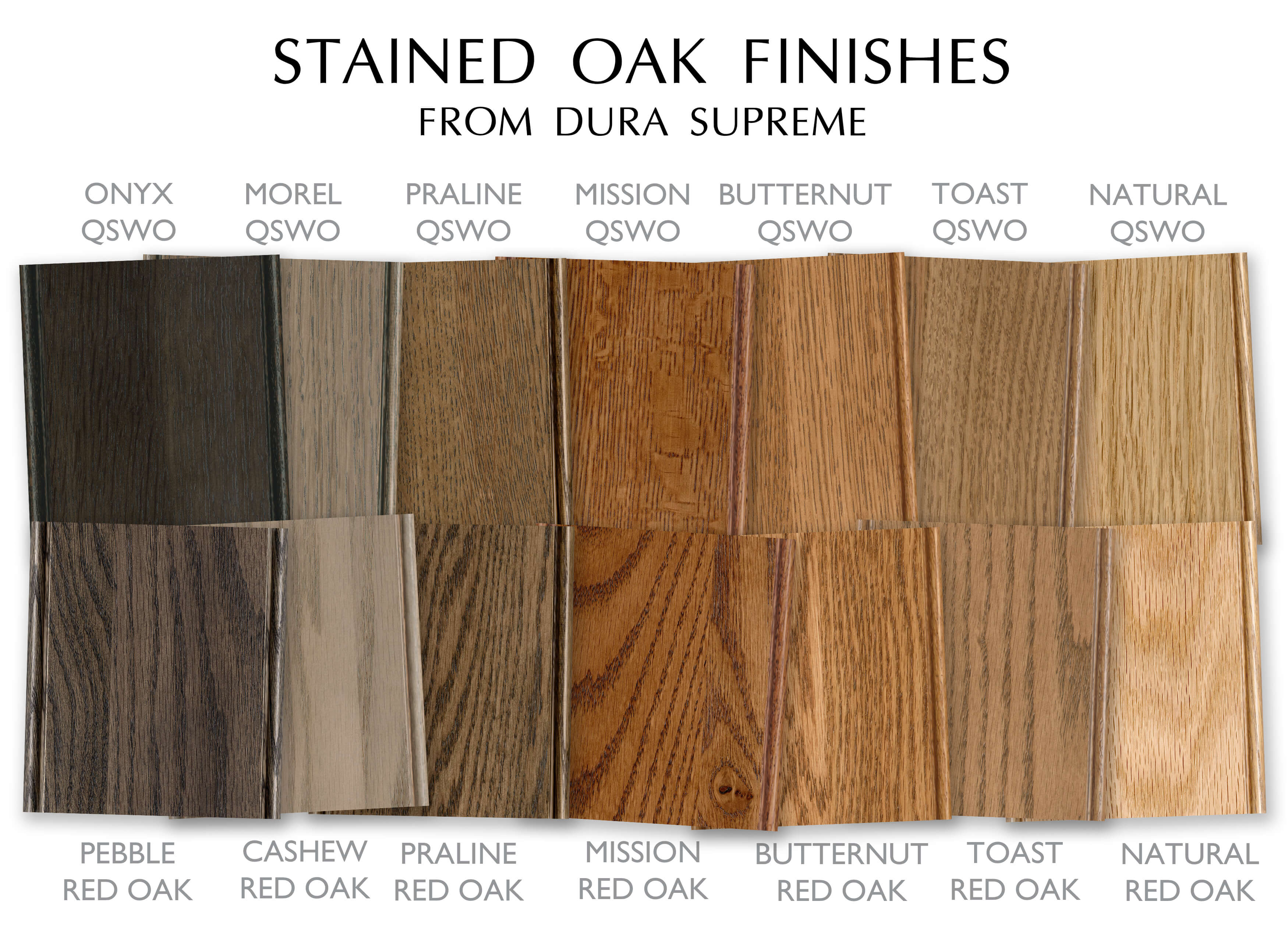Preparing Oak Cabinets for Staining: How To Stain Oak Wood Cabinets

A smooth, even stain finish starts with proper preparation. Cleaning and sanding your oak cabinets are crucial steps to ensure the stain adheres evenly and produces a beautiful, lasting result.
Cleaning Oak Cabinets, How to stain oak wood cabinets
Cleaning removes dirt, grease, and grime that can interfere with the stain’s adhesion.
- Use a mild detergent: A solution of mild dish soap and warm water is usually sufficient. Avoid harsh chemicals or abrasive cleaners that can damage the wood’s finish.
- Apply with a soft cloth: Gently wipe down the cabinets, paying attention to corners and crevices. Rinse thoroughly with clean water and allow the cabinets to dry completely.
- Tackle stubborn stains: For tougher stains, use a wood cleaner specifically designed for removing grease and grime. Follow the manufacturer’s instructions carefully.
Sanding Oak Cabinets
Sanding creates a smooth surface that allows the stain to penetrate evenly.
- Choose the right grit: Start with a coarse grit sandpaper (80-120 grit) to remove any imperfections or previous finishes. Gradually move to finer grits (150-220 grit) to achieve a smooth finish.
- Sand with the grain: Always sand in the direction of the wood grain. This helps to avoid scratches and creates a more uniform surface.
- Use even pressure: Apply consistent pressure while sanding to ensure a smooth and even finish. Avoid pressing too hard, as this can create uneven sanding marks.
Removing Dust After Sanding
Dust particles can interfere with the stain’s adhesion, creating a cloudy or uneven finish.
Thorough dust removal is essential for a professional-looking stain finish.
- Use a tack cloth: A tack cloth is a sticky cloth designed to remove dust particles from surfaces. Simply wipe down the cabinets with a tack cloth to pick up any remaining dust.
- Vacuum with a brush attachment: A vacuum cleaner with a brush attachment can effectively remove dust from crevices and hard-to-reach areas. Be sure to use a soft brush to avoid scratching the wood.
- Compressed air: Compressed air can be used to blow away dust particles. However, use caution as too much pressure can blow dust into the air, which can settle back onto the cabinets.
Choosing the Right Stain for Oak Cabinets

Choosing the right stain for your oak cabinets is crucial for achieving the desired look and feel. The type of stain you select will influence the final color, finish, and durability of your cabinets.
Types of Wood Stains
There are three main types of wood stains: oil-based, water-based, and gel stains. Each type has its own unique characteristics and advantages.
- Oil-Based Stains: Oil-based stains are known for their deep penetration into the wood, resulting in rich, vibrant colors. They also tend to enhance the natural grain of the wood, creating a beautiful, rustic look. Oil-based stains are slow to dry, which allows for more time to blend and correct mistakes. However, they also produce strong fumes and require more time for cleanup.
- Water-Based Stains: Water-based stains are becoming increasingly popular due to their low VOC content and quick drying time. They are easier to clean up and produce less odor than oil-based stains. However, they tend to be less penetrating and may not provide the same depth of color as oil-based stains.
- Gel Stains: Gel stains are thicker than oil-based or water-based stains and are designed to minimize dripping and running. They are ideal for vertical surfaces like cabinets, as they stay put and provide a more even application. However, gel stains can be more difficult to apply and may require more sanding to achieve a smooth finish.
Choosing the Right Stain Color
When selecting a stain color for your oak cabinets, consider the following factors:
- Existing Decor: The stain color should complement the overall decor of your kitchen or bathroom. For example, if you have a modern kitchen with sleek stainless steel appliances, you might choose a light or medium stain to create a clean and contemporary look.
- Desired Aesthetic: Consider the look you are trying to achieve. Do you want a warm, traditional feel, or a cool, modern look? Light stains tend to create a brighter, more airy feel, while darker stains create a more dramatic and sophisticated look.
- Wood Grain: Oak wood has a distinctive grain pattern that can be enhanced or muted by the stain color. Light stains will highlight the grain, while darker stains will minimize its appearance.
Testing Stain Colors
Always test stain colors on a hidden area of the cabinet before applying it to the entire surface. This will allow you to see how the stain interacts with the wood and how it will look in your space. Apply a small amount of stain to a hidden area and allow it to dry completely. Once dry, evaluate the color and decide if it is the right choice for your cabinets.
Applying Stain to Oak Cabinets

Now that your oak cabinets are prepped and ready, it’s time to apply the stain! This step is where the color magic happens, transforming your cabinets from plain wood to a beautiful, rich finish. Let’s dive into the process and explore the techniques for achieving a flawless stain application.
Applying Stain to Oak Cabinets
Before you begin, gather the necessary tools:
- Stain: Choose a stain that complements your desired aesthetic.
- Brush or Cloth: Both have their pros and cons, which we’ll discuss in detail.
- Gloves: Protect your hands from the stain.
- Drop Cloth: Prevent staining your floor or surrounding surfaces.
- Tack Cloth: Remove dust and debris before applying the stain.
- Rag or Paper Towels: Wipe away excess stain and clean up spills.
Now, let’s get started!
Applying Stain with a Brush
Using a brush provides excellent control, allowing you to precisely apply the stain to every nook and cranny.
- Apply a thin, even coat of stain to the wood. Use a brush with soft bristles to avoid leaving brush marks.
- Work in the direction of the wood grain. This will create a natural, consistent finish.
- Avoid overloading the brush. Too much stain can lead to drips and streaks.
- Let the stain sit for the recommended drying time. This will ensure the stain penetrates the wood properly.
- Wipe away any excess stain with a clean rag. This will prevent the stain from becoming too dark.
Applying Stain with a Cloth
For a smoother finish, many prefer using a cloth. Here’s how to do it:
- Dip a clean cloth into the stain. Avoid soaking the cloth; a damp cloth is sufficient.
- Wipe the stain onto the wood in the direction of the grain. Apply even pressure to ensure the stain is evenly distributed.
- Work in small sections. This will help you control the application and avoid drips.
- Allow the stain to dry for the recommended time. Check the manufacturer’s instructions for specific drying times.
- Wipe away excess stain with a clean rag. This will prevent the stain from becoming too dark.
Tips for Avoiding Drips and Streaks
- Use a high-quality stain. A good stain will be easier to apply and will produce a smoother finish.
- Work in well-ventilated areas. This will help the stain dry faster and prevent fumes from building up.
- Avoid applying stain in direct sunlight. Direct sunlight can cause the stain to dry too quickly and leave streaks.
- Wipe away any drips or spills immediately. The longer the stain sits on the wood, the more difficult it will be to remove.
Brush vs. Cloth: A Comparison
| Brush | Cloth | |
|---|---|---|
| Pros | Excellent control for detailed work; can reach into tight spaces. | Smooth, even finish; less likely to leave brush marks. |
| Cons | Can leave brush marks if not used properly; may require more coats. | Less control for precise application; may not reach into tight spaces. |
How to stain oak wood cabinets – Staining oak wood cabinets can be a rewarding project, adding warmth and character to your kitchen. If you’re looking for a timeless and elegant finish, consider incorporating the rich hues of wood hu kitchen cabinets into your design. Whether you choose a classic honey tone or a deeper, more dramatic stain, the process of staining oak cabinets can transform the heart of your home.
Staining oak wood cabinets can be a rewarding process, transforming their appearance and enhancing their natural beauty. It’s a journey that combines precision and creativity, much like the artistry of cabinet and wood magic , where skilled craftspeople breathe life into wood.
With the right techniques and stain, you can achieve a stunning finish that complements your kitchen or any space in your home.
